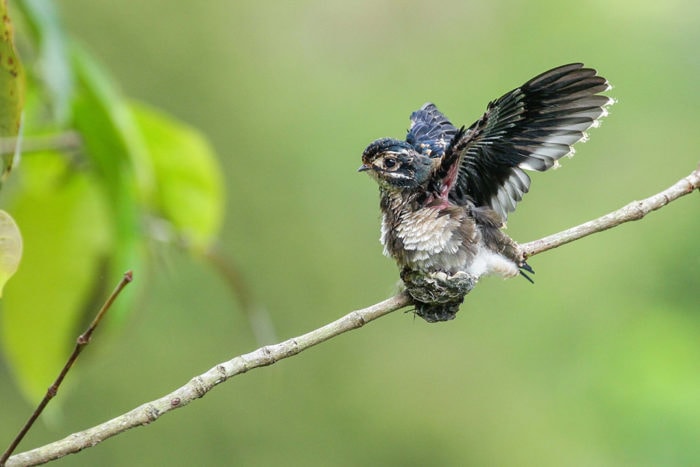This delicate little treeswift is the best mum

Bec Crew
Bec Crew

THIS PLUCKY LITTLE bird belongs to the treeswift family, alongside the very dapper moustached treeswift – check him out! – and the crested and grey-rumped treeswifts.
Hailing from India and South East Asia, including Indonesia, New Guinea, and the Solomon Islands, treeswifts inhabit all kinds of environments, from mangroves and woodlands, to dense, tropical forests.
A few have even made it to Australia, but they’re classified as vagrants, which means they’ve never managed to establish an actual population here.
Unlike members of the true swift family, which – oddly enough – are incapable of perching, treeswifts can perch, and are arguably prettier birds, with more noticeable markings and more elaborate colouring.
They’re also not social like true swifts are, but that doesn’t mean they don’t take family very seriously.
During the breeding season, between February and August, whiskered treeswifts will pair up, and the male and female will build a little nest in the shape of a half-saucer up in the forest canopy.
This nest is so tiny, it can only hold a single egg, which the parents will manoeuvre into an upright position in the nest, as if it’s sitting in an eggcup made of twigs, feather down, and saliva.
This can get awfully precarious, because although treeswifts are small birds, and weigh barely anything, if they attempted to sit on the egg to incubate it, the delicate nest would collapse under them.
Instead, mum or dad has to sit on the tree branch directly behind the nest, and puff out their chest so their feathers can still engulf the egg without actually sitting on it.
The same thing goes for when the egg hatches, as you can see in the adorable footage below:
Soon enough, the chick will need to leave the nest to branch out on its own, and when we say “soon”, we mean it – whiskered treeswift chicks leave after just one week.
But when you see how easily they out-grow their nest, that actually makes a whole lot of sense:

(Image Credit: raymond ng yong sern/Shutterstock)
When only a single week of your life is spent under the care of someone else, you’re going to take full advantage of it. And nowhere is this more clear than in this footage of a whiskered treeswift and its chick.
That chick is so snuggly, it’s like all of us under the doona on a Saturday morning:




